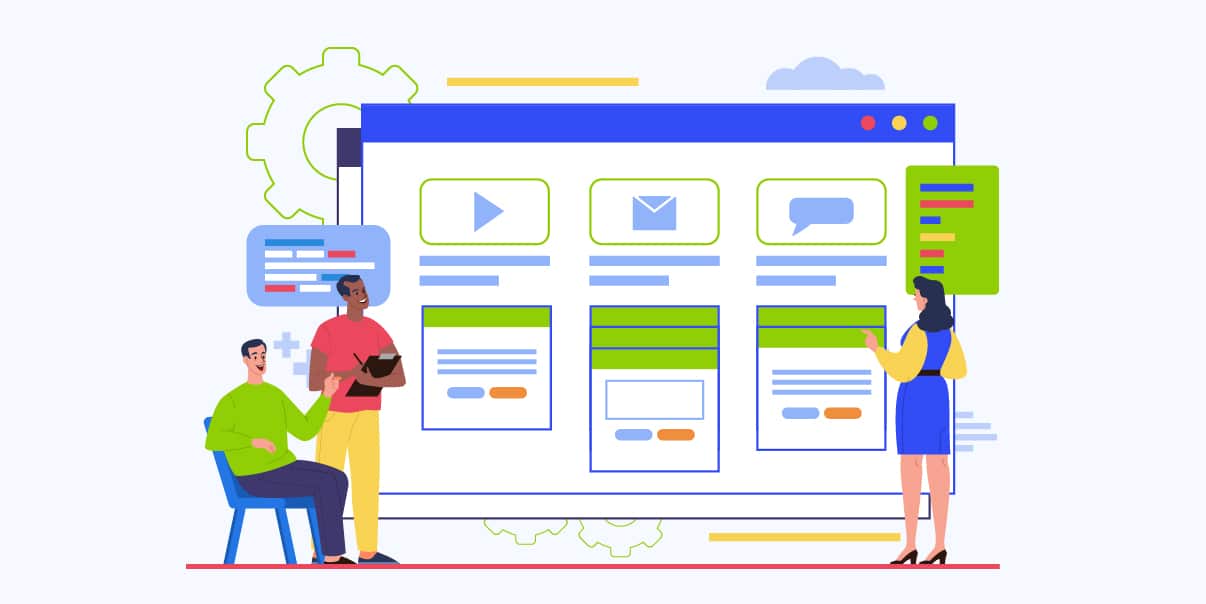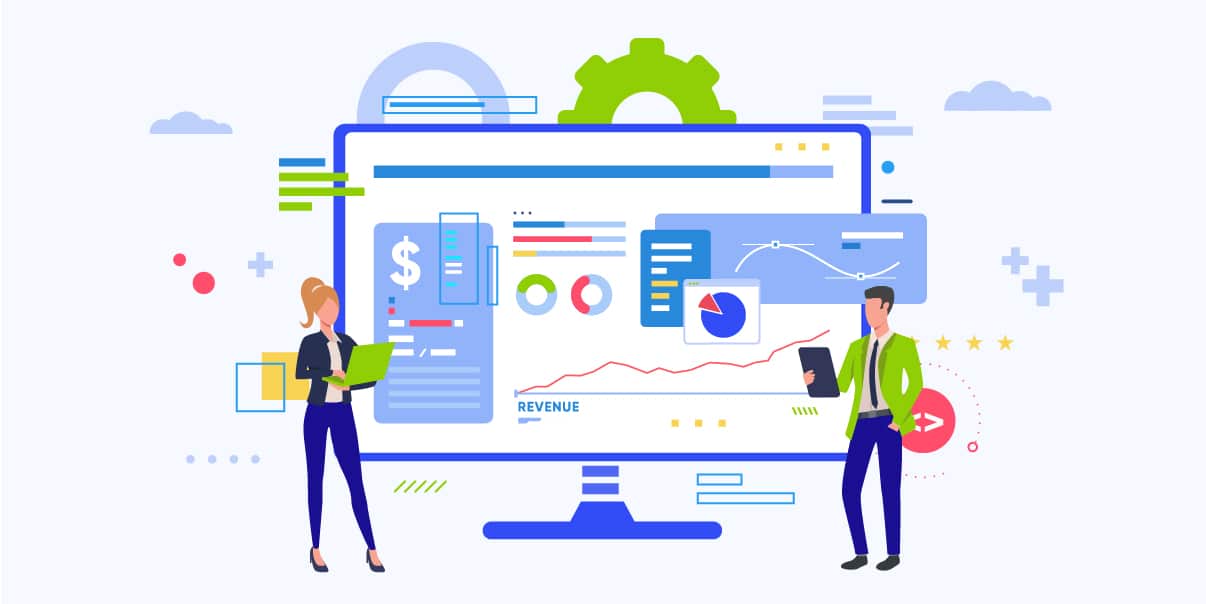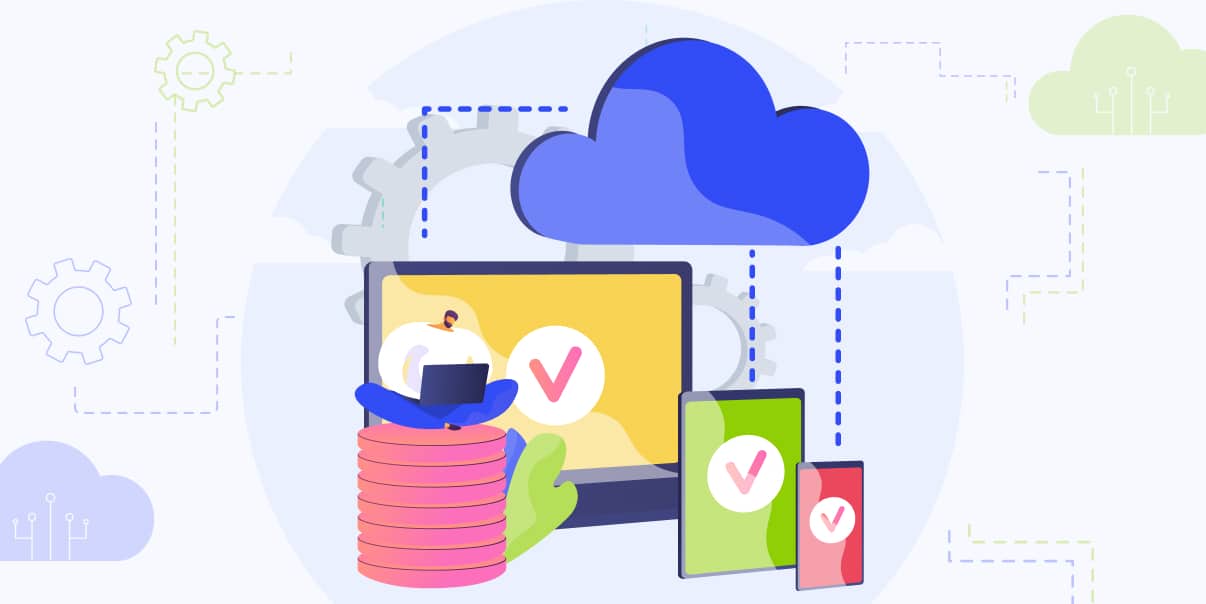Everything You Should Know About the SaaS Development Life Cycle
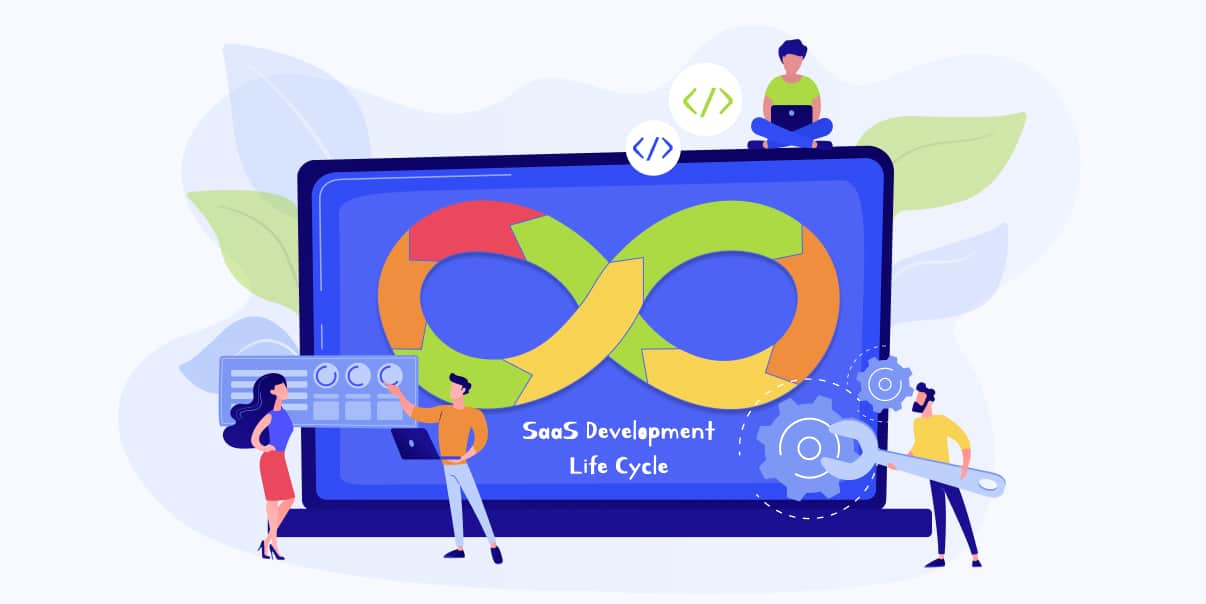
Software-as-a-Service (SaaS) has become popular in recent years. And SaaS development is an integral part of it. The SaaS development life cycle (SaaSDLC) defines the steps you need to develop applications available over the Internet on subscription-based models.
Are you looking to build a SaaS application? The software-as-a-service life cycle is essential for success, and this blog will provide an in-depth look at the stages that make up the SaaSDLC.
From idea creation to support, we’ll give you the information you need to ensure successful SaaS app development. Keep reading to learn more!
What Is the SaaS Development Life Cycle?
The SaaSDLC is about ensuring subscription-based software applications work optimally. It includes keeping the apps up-to-date with the latest features and technologies. Testing them on different platforms also ensures they function correctly and provide user support if needed. It also involves monitoring usage to handle multiple users.
All these steps help you meet customer requirements and create reliable, secure applications. To ensure high-quality development, you need a well-defined SaaS development life cycle.
SaaS Development: Why Using the Right Approach Is Important
By following the proper steps, SaaS companies can create an app that is reliable, intuitive, and capable of delivering a great user experience. The life cycle allows for more efficient development and better testing and analytics, which help identify any potential issues with the design before it goes live.
Overall, taking a structured approach to SaaS service development ensures that you build apps that maximize their value for users.
What Are the Stages of the SaaS Software Development Life Cycle?
The SaaSDLC has several distinct stages. Each is important for SaaS application development.
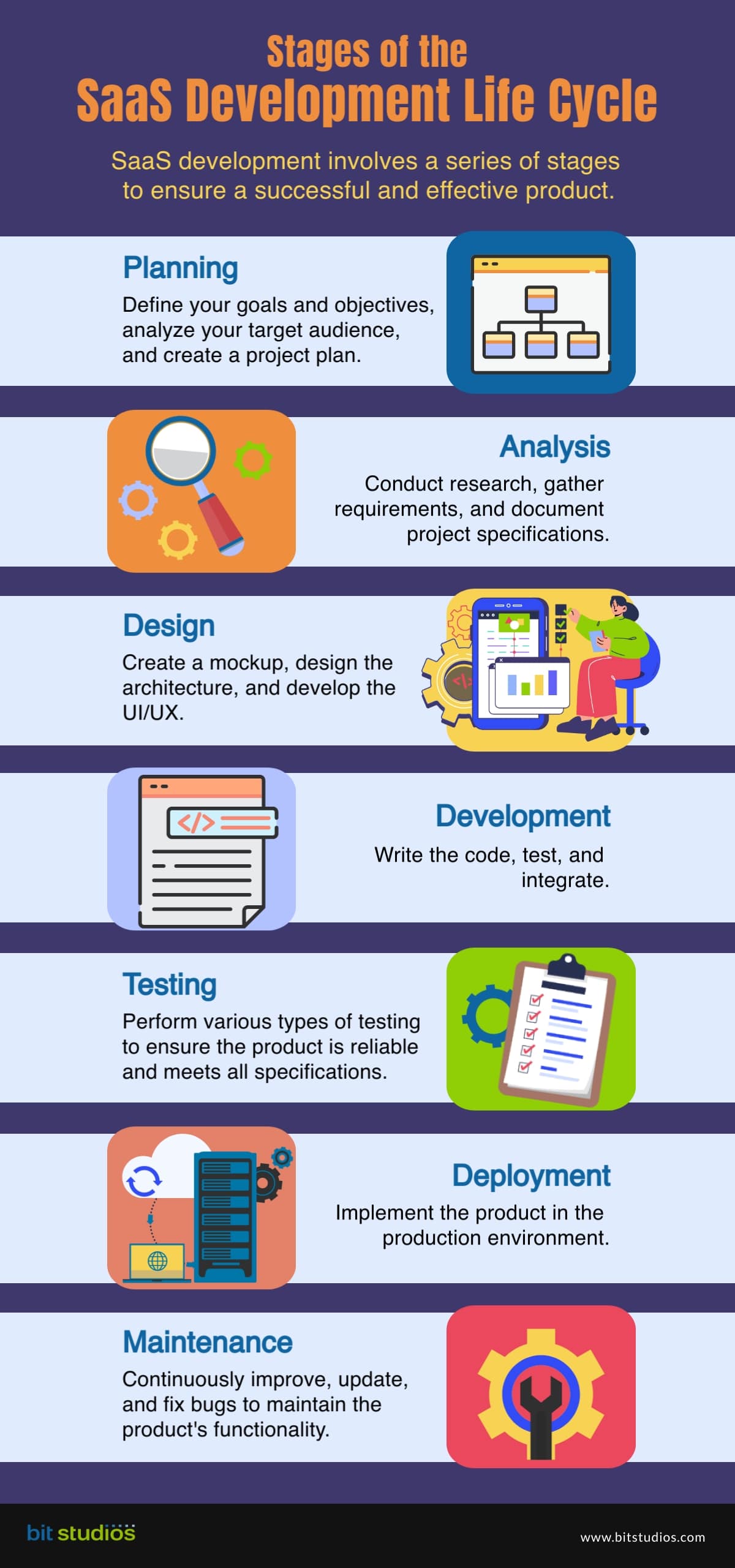
Planning
The planning stage is all about organizing the development process. It involves gathering and analyzing necessary information that helps you plan the best way to create the software. Once you have collected the data, it’s time to start designing a strategy for developing the SaaS product. From deciding which platform and specific features to use, the planning stage helps turn ideas into concrete plans.
At this stage, you should already be thinking about how your app will stand out from similar apps. Plan each development step carefully so everyone knows their role and when to complete the tasks.
Planning is necessary and is an integral part of the SaaSDLC to ensure that SaaS applications are secure and maintainable in the long term. To facilitate this, you should perform the following:
- Formalize all requirements for the project’s terms of reference
- Create a roadmap
- Develop a risk mitigation strategy
Subscription
A company developing a service with an ongoing subscription must consider the subscription stage. At this stage, you’ll determine how customers will sign up and pay for continuous access to the software they need.
This stage lets users choose if they want to sign up for one month, three months, six months, or one year. Companies gather data from each user to customize their services and guarantee customer satisfaction in the long run. Businesses must also ensure that their subscription plans are fair and offer good value while providing enough revenue to continue operating well.
Development
The next stage of the SaaSDLC is development. It involves coding and programming to create a service that meets customer expectations. This development stage consists of the following steps:
- Gathering requirements to figure out customer needs
- Creating diagrams and flowcharts to map out the system
- Building and testing the software
- Fixing any issues encountered
Additionally, the development team works on designing features that make the service easier to interact with and use. You can ensure that you meet customers’ needs with extensive collaboration and communication. And once this is complete, the product is ready for launch.
Operations
The operations stage is the last stage of the software development life cycle. It is when the software is finally ready for use. The operations stage may sound easy, but there are a lot of crucial things that happen during this phase.
During operations, ensure that everything runs smoothly and that the team has the correct information. You can test the software to see if it works well and ensure everyone understands its use. You also need to guarantee that the software is secure and up-to-date.
Be sure to plan for what happens if something goes wrong during this stage. And this includes knowing how to troubleshoot the software or roll back any necessary changes.
At the end of this stage, you should have a running system that users can access and use without any issues. If everything goes well, you can continue to use the system for years. But it is vital to track and maintain your software so you can deal with any changes fast. The operations stage is the most crucial part of the SaaSDLC because it represents the end goal. And that is a working software product that people can use.
SaaS Development Challenges and How To Solve Them
Developing SaaS applications brings an array of unique challenges. You have to juggle scalability, security, and customer satisfaction. Hence, below are some of the most crucial SaaS development challenges and how to overcome them:
Choosing Proper Technologies Stack
It is vital to choose a technology that provides scalability and is cost-effective. When selecting technologies for your stack, consider tools like ReactJS or VueJS. Also, look into AWS cloud services that offer cost savings and scalability options. Finally, pick an intuitive database system such as MySQL, which is easier for beginners to understand.
The SaaSDLC runs efficiently by selecting understandable and feature-rich technologies.
Solution:
Teams should check existing solutions, compare advantages and disadvantages, and consult experts. Also, they should look into emerging tech trends to ensure they get the most reliable technologies.
Security Issues
The SaaSDLC should focus on security and risk management. It includes the following:
- Frequent scanning of potential vulnerabilities
- Conducting attack simulations and penetration tests
- Monitoring user activity
- Patching existing flaws in the system
Many development teams also use third-party threat validation services. It is to ensure their application complies with industry standards.
Secure SaaSDLC also requires robust user authentication and authorization. It implements multi-factor authentication. And use tokens or other secure methods of exchanging credentials.
Solution:
SaaS apps must have a firewall to protect data and networks further. It prevents malicious traffic from entering the application. Plus, it protects user data from unauthorized users. SaaS developers should also use encryption technologies, like HTTPS, S/MIME, or SSL, to secure user data exchanges during transactions. Thus, you can deliver valuable services to customers with secure SaaS development.
Team Collaboration
Team collaboration is essential for the SaaSDLC. And a dependable partner is vital to achieving a quality product. You should communicate well, share ideas and feedback, and work together.
Working with a team to develop software can prove to be challenging. From ensuring everyone has access to the same tools to aligning expectations, many obstacles interfere with smooth collaboration.
Solution:
Communication is the answer to successful team collaboration. It is essential to understand the roles and responsibilities within the project and agree to a set of ground rules for transparency. Moreover, communication helps ensure that you share information effectively and resolve conflicts. A strong project management plan is also critical for successful team collaboration. It includes identifying concrete deliverables and tasks needed to finish them within measurable timelines.
Deployment with Zero Downtime
Deploying SaaS applications without downtime is a challenge. You must create an automated deployment pipeline and plan a risk mitigation strategy. Also, test SaaS apps before the final release to address all bugs and issues beforehand. And develop a roadmap to ensure you can update, upgrade, and maintain SaaS apps in the future. The proper development strategy creates successful SaaS applications and deploys them without issues.
Solution:
Companies must stay vigilant to offer uninterrupted services to customers. You need to plan and test extensively before rolling out changes. Even the tiniest of issues can cause problems down the line. Investing in advanced automated processes and reliable tools is a great move. Automation streamlines DevOps processes to reduce risk and ensure fast and effective deployments. Moreover, using advanced metrics to track app performance, usage statistics, and customer feedback helps you identify areas of concern before they affect end users.
Integration of Third-Party Payments
Integrating third-party payments into SaaS apps is a tricky task. The payment gateway should meet industry standards and follow the necessary compliance measures. With the increased use of digital payments, companies must find ways to stay up-to-date with the latest payment technologies. And this includes integrating third-party payment systems into their development process. It involves testing and validation, system integration, and security reviews. Also, these challenges arise because some providers have different product offerings or APIs.
Solution:
Despite this challenge, it is possible to integrate third-party payments if you take the time to understand the process. Ensure proper communication between stakeholders so everything will be under control. Various SaaS tools also make it easier to integrate third-party payments. Hence, you can focus on improving SaaS application scalability and customer satisfaction.
Setting the Right Pricing Model
Companies want to maximize profits while enabling customers to keep costs within their budgets. A SaaS project’s price includes the labor required to code, configure, and test apps. But hidden in this cost are many factors you should consider when creating a pricing model.
There are a few sources of complexity in setting a pricing model, such as:
- Understanding customer needs
- Accurately reflecting project scope and timeline
- Accommodating variable requirements
- Keeping costs low enough that customers find it affordable
Setting SaaS pricing is a critical part of SaaS development. Identify SaaS apps’ target users, research competitor prices, and create plans for each customer segment. Additionally, consider the economics of SaaS monetization to ensure long-term sustainability.
Solution:
Creating an appropriate pricing structure for SaaSDLC projects can be tricky. But with careful consideration and communication, businesses can establish models that maximize their profit potential while providing customers with affordable yet practical solutions. Companies must price their services competitively to attract customers who value quality. Consider customer feedback and adjust SaaS prices to ensure customer satisfaction. With a suitable SaaS pricing model, you can maximize revenue in the long run.
What Are the Examples of SaaS Applications?
Below are some of the best SaaS application examples that will inspire you to leap ahead:
Slack
Slack provides users access to intuitive tools that let them communicate in real-time. Slack also has robust security measures that ensure data privacy and protection. Its pricing model allows users to scale their usage up or down depending on their needs. These features make Slack one of the best examples of a modern SaaS app for businesses around the globe.
Buffer
Because of its intuitive design and ability to scale, Buffer is an excellent SaaS application. Its user-friendly interface allows for seamless collaboration among team members. You can better manage social media accounts from any device with Internet access. Additionally, Buffer’s focus on security ensures secured user data at all times. Hence, Buffer provides a reliable solution for managing your social media presence.
Trello
Yet another excellent example of a SaaS application is Trello. It is an easy-to-use web-based project management tool that lets users organize tasks into boards and track progress. Trello’s intuitive drag-and-drop interface makes it simple to get up to speed fast. It helps businesses streamline their processes and improve productivity.
G-Suite
G-Suite is a perfect example of a successful SaaS application due to its secure and intuitive platform. It offers cloud-based productivity solutions, including email, document storage, calendars, and collaboration tools. Moreover, G-Suite’s security measures keep user data safe. Thus, G-Suite helps increase business efficiency and protect valuable data.
Microsoft Office
It offers various powerful tools accessible from any device with an Internet connection. Microsoft Office includes Word, Excel, Powerpoint, Teams, and Outlook applications. Plus, it has robust security protocols to ensure your data is safe. Hence, Microsoft Office is the ideal app for businesses looking for a reliable way to work online.
Takeaways
The SaaSDLC is an ever-evolving process that you can customize to meet specific business needs. Through careful planning and budgeting, businesses can take advantage of the benefits of SaaS while meeting industry standards. Companies must stay flexible to ensure top performance and quality in their software solutions.
Also, developers must consider all the SaaSDLC stages and secure the following:
- Data transfer
- Software development
- Pricing models
- Application scalability
- Product design
With careful execution, you can build compelling apps that solve customer problems. Pay attention to each step of the SaaS life cycle and follow the best practices for SaaS development. A well-planned strategy helps you achieve successful SaaS applications that meet customer demands.
SaaSDLC FAQs
What Are the Best SaaS Development Tools To Use?
There are a variety of tools available today. Each development tool has features used in different SaaSDLC stages. Here are a few of them:
ClickUp
ClickUp is a development tool used for task and SaaS project management. It enables users to create a detailed plan to manage SaaS projects. Below are its features:
- Collaboration
- Task tracking
- Performance measurement
- Task assignment
- Progress tracking
- Deadline and dependency setup
Once project plans are in place, you can move on to the design phase. It is where stakeholders and the SaaS team define the features and user experience. ClickUp lets you collaborate on designs, review feedback, and assign tasks for implementation. Also, it allows you to do the following:
- Add deadlines for the delivery of each feature
- Manage bug reports
- View performance analytics
Zendesk
From web-based self-service portals to mobile apps, Zendesk offers an integrated platform. It makes it easy to build a comprehensive SaaS development environment. It gives customers a range of development services. Zendesk has a wide range of SaaS solutions for businesses of all sizes. From API Integration to SaaS software, it has it all for you. Companies can create SaaS apps tailored to their needs without expensive custom development.
For SaaS projects, Zendesk offers SaaS DevOps and SaaS Monetization. SaaS DevOps is a cloud-based platform that lets you develop and deploy SaaS apps. Meanwhile, SaaS Monetization monetizes apps through SaaS subscription plans and pay-per-use models.
Zendesk’s SaaS solutions help businesses streamline their SaaS development workflows. With SaaS DevOps, companies can build SaaS apps with minimal effort. Also, SaaS Monetization makes it easy to monetize apps without costly custom development.
Hootsuite
Hootsuite’s powerful suite of tools helps businesses save time and resources. Using it, you can stay at the forefront of your industry’s digital trends. Also, it is intuitive and user-friendly. It lets you set up a SaaS platform and manage social media accounts, including:
- Scheduling posts
- Tracking analytics
- Responding to messages
Hootsuite integrates SaaS products with analytics tools and customer relationship management (CRM) systems. It lets you create a SaaS solution that meets customers’ needs and boasts of the following:
- Intuitive user interface
- Powerful tools
- Ability to integrate with other SaaS products
Hootsuite is a great SaaS cloud provider for those looking to take SaaS development to the next level.
Salesforce
This cloud-based software provides users with tools that manage customer relationships. It deploys custom applications tailored to your needs. With Salesforce, you can develop and deploy SaaS applications that meet customer expectations.
During the SaaS deployment phase, developers use Salesforce tools to deploy SaaS apps. It includes setting up SaaS features such as authentication, authorization, and data storage. Salesforce is a powerful tool that develops SaaS applications based on customers’ needs.
Why Choose BIT Studios To Develop SaaS Applications?
BIT Studios is a software development company specializing in the SaaS development lifecycle. SaaS apps offer greater scalability and flexibility than traditional software development lifecycle. With BIT Studios, you can deliver SaaS applications with the highest reliability.
The SaaSDLC requires specialized expertise to ensure successful outcomes. Our SaaS developers have the knowledge and technical capabilities to provide the highest quality SaaS apps. We understand the importance of developing cost-effective SaaS apps without compromising quality.
Our developers are well-versed in all aspects of the SaaSDLC, including:
- Design
- Architecture
- Coding
- Testing
- Deployment
- Maintenance
We know the importance of flexibility to ensure your SaaS apps are ready for future growth. BIT Studios also recognizes the importance of creating easy-to-use SaaS applications. These are easy to integrate into existing systems, networks, and databases.
At BIT Studios, we strive for excellence in SaaS development. We leverage our experience and expertise in the following fields:
- Software engineering
- Agile process
- Automation tools
- Cutting-edge technologies
Our developers commit to delivering reliable SaaS apps on time and within budget. We provide secure and intuitive apps so you can enjoy a pleasant user experience. Thus, BIT Studios is the right choice if you want an experienced SaaS development partner. We deliver dependable and top-notch SaaS applications.
How To Make a SaaS Project Successful?
Software-as-a-service has become the go-to model for many businesses. And SaaS development is critical to ensuring successful software projects. SaaS projects need careful planning and execution. It guarantees to meet customer demands and provides an optimal user experience. Here are some ways to make SaaS projects successful:
1. Define your SaaSDLC
The SaaSDLC is a process that outlines the steps from planning to deployment and maintenance of a SaaS product. It includes requirements analysis, architecture design, coding, testing, deployment, and support. Defining the SaaSDLC helps you understand how to build SaaS products and ensure your project stays on track.
2. Choose the Right SaaS Development Team and Technology Stack
Finding the right SaaS development team is essential for successful SaaS projects. The development team needs the right skills and experience to create a SaaS solution that meets the customer’s requirements. Moreover, selecting the right technology stack for SaaS projects is vital. Choosing the right tools and frameworks ensures your project runs well throughout its life cycle.
3. Use the Agile Method
Agile SaaS development is a practical approach to SaaS projects. It focuses on the iterative and incremental SaaS development process. Hence, it allows SaaS teams to respond quickly to customer feedback and changes in the SaaS market. It helps SaaS teams create a product that customers will love as it evolves with their needs.
4. Implement Automation and Testing
Automation and testing are vital components of SaaS projects. Automated testing ensures SaaS products are bug-free and functioning well. In contrast, automated deployment distributes SaaS apps to users. Automated monitoring helps SaaS teams identify potential issues before they affect customers.
Indeed, these things help create successful SaaS products by executing the typical software development lifecycle. The critical components of a successful SaaS project are as follows:
- Right SaaS team
- Technology stack
- Agile method
- Automated testing and deployment
With these things in place, you are sure that a SaaS product meets the customer’s requirements.
We’re BIT Studios!
At BIT Studios we specialize in designing, building, shipping, and scaling beautiful, usable products with blazing-fast efficiency

